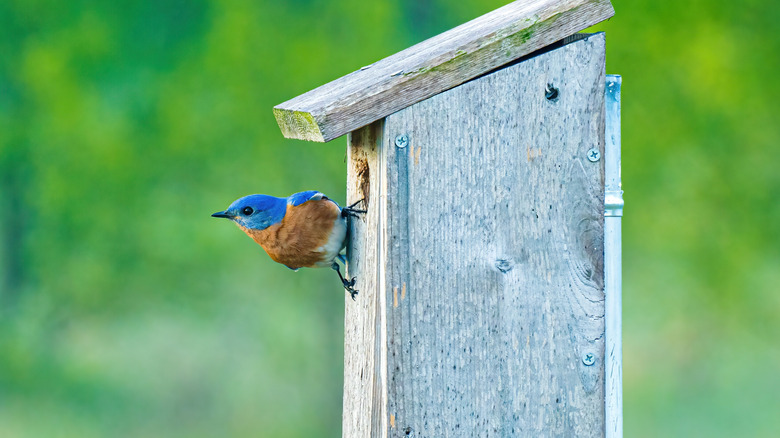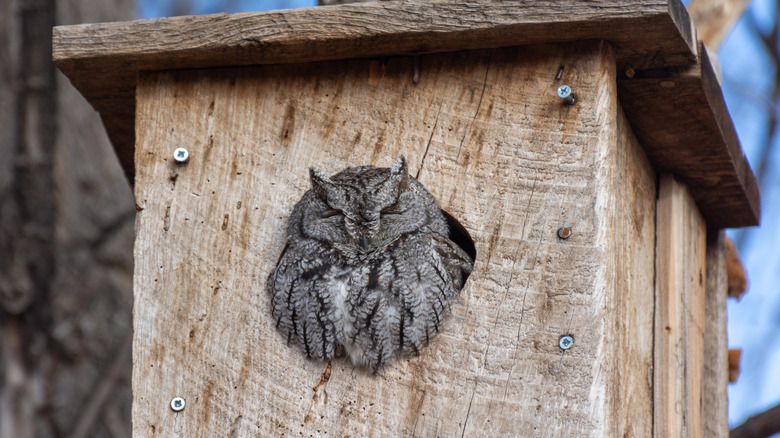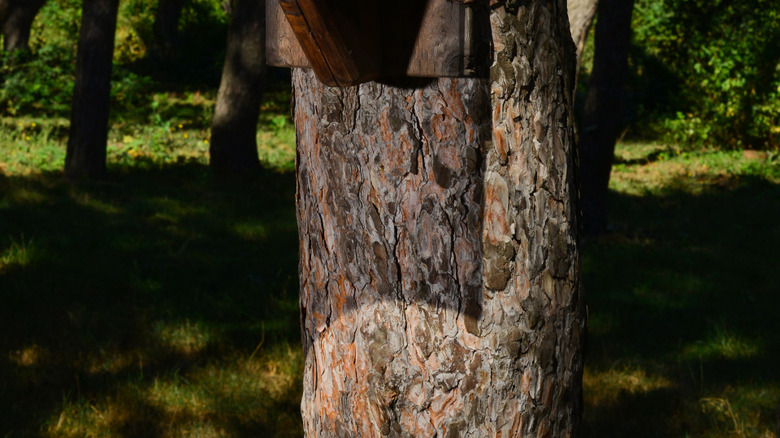The Difference Between Nesting Boxes And Birdhouses (& When To Use Them)
The difference between nesting boxes and birdhouses can be difficult to define. For example, it might seem obvious that a nesting box is somewhere for birds to nest and lay eggs, but what's a birdbox? Cornell Lab of Ornithology (part of Cornell University) describes it as somewhere to "support more nesting birds and give a bird a home." So, they are both the same thing, right? Well, although some feel the two terms can be interchangeable, not everyone agrees. There are those that describe birdhouses as those decorative garden features that might look like small homes, teapots, or even animal heads. Does it matter? It does, because some of them can actually be hazardous to the birds and their chicks.
With loss of habitat a major factor in the decline of many native bird populations, knowing how to attract birds to your garden and providing them with somewhere to nest is an important thing to do. However, it's vital that things are done in the right way, and the confusion with names doesn't help.
So, let's clarify. A nest box is a place for birds to build a nest, lay eggs, and raise chicks. They are almost always plain wood structures, easily missed. A birdhouse is more decorative. Something attractive or amusing to look at in the garden. It might encourage birds to nest, but that's not necessarily its primary function. To understand when to use them, we need to look at their key features in detail.
How to ensure nesting boxes help birds survive and thrive
A nest box should be used when you want to encourage birds to breed. In order for a nest box to be effective, it should be designed for a specific species. The Cornell Lab website has a page called "Right Bird, Right House" with 61 free plans to underline how important this is. Good nest boxes shouldn't have perches outside. The resident birds don't need them, and they may offer a place for predators to lurk.
Nest boxes should only ever be made of wood. Other materials might get too hot inside. If a preservative is used, it should be water-based and only applied to the outside. Chicks in particular are very susceptible to chemicals. Where you use the nest box will again depend on the species it is intended for. If you want to keep birds visiting your garden in winter, you'll need to take other steps, because nest boxes are normally abandoned after the chicks have fledged and left. Bird conservation groups like the National Audubon Society and American Bird Conservancy are great places to get further information.
The problems with many decorative birdhouses
Some suggest you avoid using decorative birdhouses altogether. Those made with metal or plastic can get too hot inside for the health of the birds and chicks. While some have an asphalt roof to increase weather protection, this can also be bad for the birds in terms of heat transfer and toxic chemicals that could leach into the wood. Having clear plastic windows that allow you to see the chicks as they develop unfortunately also shows predators their next meal. The particular problem with teapots is the size of the access. Rats, cats, and birds that eat eggs and chicks, like blue jays and crows, can easily reach inside. If you do want to use a birdhouses of this type, either close off the opening, making it purely decorative, or plug it with a piece of wood that has a smaller hole so that only the birds it's intended for can get in.
There are many birdscaping tips to turn your garden into a bird haven, and giving them somewhere to nest is a big part of any successful plan. However, for the sake of our feathered friends, it's important that you research how to meet their needs properly rather than just putting up something that's attractive to your eyes but a hazard for them.


